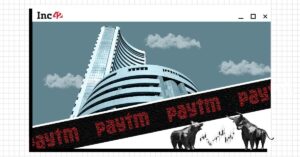
There is no doubt that technology has become an integral part of any industry, whether it may be manufacturing, health, transport, or even legacy industries such as construction, publishing and retail. Some focus on using technology as their primary driver of development, while others use it as an aid. However, none can dispute the burning necessity to integrate technology into their day-to-day functioning. The goal is not to simply implement technology to make a business more tech-savvy but to do that with a healthy degree of understanding the benevolent impact that it has first. So, what are some of the meaningful and pragmatic ways in which technology is changing all major industries in this age of digitalization?

Increased pay
Digitalization comes with a higher demand for deep and broad knowledge of technology and the need to employ well-educated individuals who can harness their digital skills. This has also allowed for better job prospects, as the average wage has also increased in industries that have been positively augmented by technology. Furthermore, this raises the incentive to pursue education in technology-related fields such as computer science and engineering. It is estimated that between 2010 and 2016, occupations that required a high level of digital integration registered on average a wage growth of more than 0.8 percent annually, compared with occupations with lower levels of digital integration with average wage declines of 0.2 percent.
Leveraging the Internet of Things
Emerging technologies such as AI and the Internet of Things (IoT) are highly interrelated. IoT capabilities include using sensors, software and hardware, and data collection and ingestion to optimize how businesses work. For instance, this could mean that a business relies on using sensors to track resources such as fuel to gain and monitor data on fuel expenditure to automatically order a new supply. The order can be tracked via GPS and the newly arrived order of fuel can be timely prepared. This ensures that all critical components work in unison by staying connected and constantly communicating. The best thing of all is that the entire automation process can be tracked on-site using dedicated software built into a rugged panel pc.
The health industry has a stronger future
Although the health industry has undergone fierce toils because of the global pandemic, its future looks bright because of the trending technological advancements in personalized health treatment, biotech and health data management. All of this is based on a single idea; a person’s health data will serve as the basis for any immediate and long-term treatment options. This level of personalized functionality should reflect what can be seen in the entertainment industry, such as streaming platforms. Digitalization strategy is expected to be a pot of gold in the near future, not to mention alleviating the stress imposed on the healthcare capacities during the global pandemic. This ensures long-term safety for the patients when they require treatment, but they cannot get immediate service because of overloaded healthcare systems.
Higher levels of automatization
Strategic technology trends include the heavy use of AI, which plays an integral role in the automatization of simple repetitive tasks. It is widely accepted that there’s no job that is not riddled with these repetitive and sometimes pointless tasks. A 2018 report shows that machine-learning solutions are on the rise. This is where the use of narrow AI steps in. Narrow AI is a special targeted use of machine learning technology that aims to automate small repetitive tasks, using proven algorithms. This can include anything from filling out tax forms, to booking venues and flights. The only necessary thing is data, which is generated and analyzed over time, ensuring long-term stability.
Boosted productivity
The ongoing rise of technology in industries has not only marked the employment boost in the IT department but also the overall productivity has grown massively. From 2006 to 2016, it was registered that the average GDP output per employee in the IT and other related industries has doubled in comparison to the total economy. The annual GDP output per employee is estimated to have increased anywhere from $321,659 to $408,129. The crucial thing to note here is the beneficial spillover effect that the IT industry has had on other non-IT industries. These digital spillovers can serve as a significant factor in estimating future productivity.
With these highly noticeable results, it is safe to assume that the future is digital. No longer will digitalization be exclusive to the IT industry, but it will also be part and parcel to other industries such as the health industry, due to the spillover effect. This has the benefit of ensuring better GDP output, optimization through automatization and increased pay with the added possibility to make all aspects of a business interlinked by relying on IoT capabilities.
The post 5 Ways Technology Is Changing Nearly All Major Industries appeared first on The Startup Magazine.










